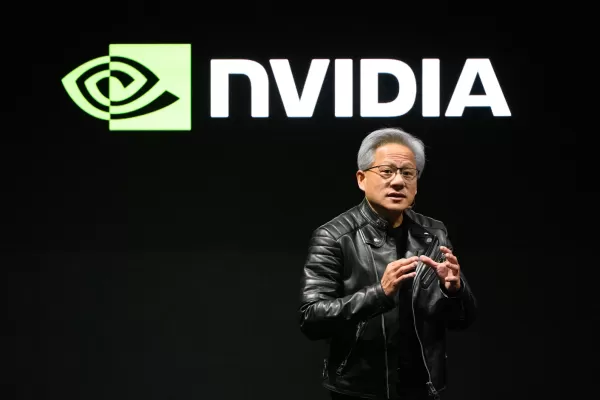US Government Invests in Intel to Boost Domestic Semiconductor Production

The Trump administration has prioritized establishing U.S. leadership in artificial intelligence, with reshoring semiconductor production serving as a cornerstone strategy. Recent policy moves, including proposed tariffs and financial incentives, demonstrate this commitment to strengthening domestic chip manufacturing capabilities.
In August, the administration made headlines by converting existing semiconductor manufacturing grants into a 10% equity position in Intel Corporation. The unique agreement includes provisions granting the federal government additional equity if Intel's ownership of its foundry operations – which produces custom chips for global clients – falls below majority control within five years.
While Intel represents just one player in the U.S. semiconductor landscape, its central role in these AI-focused industrial policies raises important questions about the company's strategic positioning.
The Road to Strategic Partnership
Intel's foundry business trajectory provides critical context:
- March 2021: Launched foundry operations alongside $20 billion investment in Arizona fabrication plants
- 2022: Proposed $5.4 billion Tower Semiconductor acquisition collapsed amid regulatory challenges
- 2024: Transitioned foundry to independent subsidiary amid broader corporate restructuring
- November 2024: Secured $7.86 billion in CHIPS Act funding
The company faced significant headwinds throughout this period, including leadership changes with Pat Gelsinger's unexpected December 2024 departure.
New Leadership and Government Engagement
The appointment of returning board member Lip-Bu Tan as CEO in March signaled a new chapter:
- Implemented streamlined operations focusing on core competencies
- Paused select manufacturing expansions, including Ohio fab project
- Faced Congressional scrutiny regarding historical China-related business ties
The subsequent Washington meetings culminated in SoftBank's $2 billion investment announcement preceding the landmark government deal.
Looking Ahead
While the agreement guarantees previously allocated funding, questions remain regarding:
- The government's actual influence as a "passive" investor
- The deal's effectiveness in achieving domestic production goals
- The broader implications for U.S. semiconductor competitiveness
This development marks a significant experiment in industrial policy as the administration pursues technological sovereignty objectives.
Related article
 Two Charged in Scheme to Illegally Export AI Chips to China
The U.S. Department of Justice (DOJ) announced Tuesday that two Chinese nationals were apprehended for allegedly orchestrating the illegal export of high-performance AI chips, valued at tens of millio
Two Charged in Scheme to Illegally Export AI Chips to China
The U.S. Department of Justice (DOJ) announced Tuesday that two Chinese nationals were apprehended for allegedly orchestrating the illegal export of high-performance AI chips, valued at tens of millio
 Nvidia’s Earnings: Beyond Export Restrictions to New Hardware Demand
Nvidia will announce its fiscal 2026 first-quarter earnings, ending April 27, after market close on Wednesday.While U.S. chip export controls have stirred concerns about Nvidia’s global chip sales and
Nvidia’s Earnings: Beyond Export Restrictions to New Hardware Demand
Nvidia will announce its fiscal 2026 first-quarter earnings, ending April 27, after market close on Wednesday.While U.S. chip export controls have stirred concerns about Nvidia’s global chip sales and
 Cognichip Unveils AI-Driven Chip Development to Accelerate Semiconductor Innovation
Chips are vital to the AI industry, yet their development lags behind the rapid pace of new AI models and products.Cognichip aims to revolutionize chip design with a foundational AI model to expedite
Comments (0)
0/200
Cognichip Unveils AI-Driven Chip Development to Accelerate Semiconductor Innovation
Chips are vital to the AI industry, yet their development lags behind the rapid pace of new AI models and products.Cognichip aims to revolutionize chip design with a foundational AI model to expedite
Comments (0)
0/200

The Trump administration has prioritized establishing U.S. leadership in artificial intelligence, with reshoring semiconductor production serving as a cornerstone strategy. Recent policy moves, including proposed tariffs and financial incentives, demonstrate this commitment to strengthening domestic chip manufacturing capabilities.
In August, the administration made headlines by converting existing semiconductor manufacturing grants into a 10% equity position in Intel Corporation. The unique agreement includes provisions granting the federal government additional equity if Intel's ownership of its foundry operations – which produces custom chips for global clients – falls below majority control within five years.
While Intel represents just one player in the U.S. semiconductor landscape, its central role in these AI-focused industrial policies raises important questions about the company's strategic positioning.
The Road to Strategic Partnership
Intel's foundry business trajectory provides critical context:
- March 2021: Launched foundry operations alongside $20 billion investment in Arizona fabrication plants
- 2022: Proposed $5.4 billion Tower Semiconductor acquisition collapsed amid regulatory challenges
- 2024: Transitioned foundry to independent subsidiary amid broader corporate restructuring
- November 2024: Secured $7.86 billion in CHIPS Act funding
The company faced significant headwinds throughout this period, including leadership changes with Pat Gelsinger's unexpected December 2024 departure.
New Leadership and Government Engagement
The appointment of returning board member Lip-Bu Tan as CEO in March signaled a new chapter:
- Implemented streamlined operations focusing on core competencies
- Paused select manufacturing expansions, including Ohio fab project
- Faced Congressional scrutiny regarding historical China-related business ties
The subsequent Washington meetings culminated in SoftBank's $2 billion investment announcement preceding the landmark government deal.
Looking Ahead
While the agreement guarantees previously allocated funding, questions remain regarding:
- The government's actual influence as a "passive" investor
- The deal's effectiveness in achieving domestic production goals
- The broader implications for U.S. semiconductor competitiveness
This development marks a significant experiment in industrial policy as the administration pursues technological sovereignty objectives.
 Two Charged in Scheme to Illegally Export AI Chips to China
The U.S. Department of Justice (DOJ) announced Tuesday that two Chinese nationals were apprehended for allegedly orchestrating the illegal export of high-performance AI chips, valued at tens of millio
Two Charged in Scheme to Illegally Export AI Chips to China
The U.S. Department of Justice (DOJ) announced Tuesday that two Chinese nationals were apprehended for allegedly orchestrating the illegal export of high-performance AI chips, valued at tens of millio
 Nvidia’s Earnings: Beyond Export Restrictions to New Hardware Demand
Nvidia will announce its fiscal 2026 first-quarter earnings, ending April 27, after market close on Wednesday.While U.S. chip export controls have stirred concerns about Nvidia’s global chip sales and
Nvidia’s Earnings: Beyond Export Restrictions to New Hardware Demand
Nvidia will announce its fiscal 2026 first-quarter earnings, ending April 27, after market close on Wednesday.While U.S. chip export controls have stirred concerns about Nvidia’s global chip sales and
 Cognichip Unveils AI-Driven Chip Development to Accelerate Semiconductor Innovation
Chips are vital to the AI industry, yet their development lags behind the rapid pace of new AI models and products.Cognichip aims to revolutionize chip design with a foundational AI model to expedite
Cognichip Unveils AI-Driven Chip Development to Accelerate Semiconductor Innovation
Chips are vital to the AI industry, yet their development lags behind the rapid pace of new AI models and products.Cognichip aims to revolutionize chip design with a foundational AI model to expedite





























